Hiyayakko or Japanese Cold Tofu is a perfect appetizer or side dish that you can whip up instantly! You‘ll love how smooth and silky it tastes. For many fun variations, feel free to switch up the toppings. Serve the tofu on a hot summer day and enjoy it with a cold beer. {Vegan/Vegetarian Adaptable}
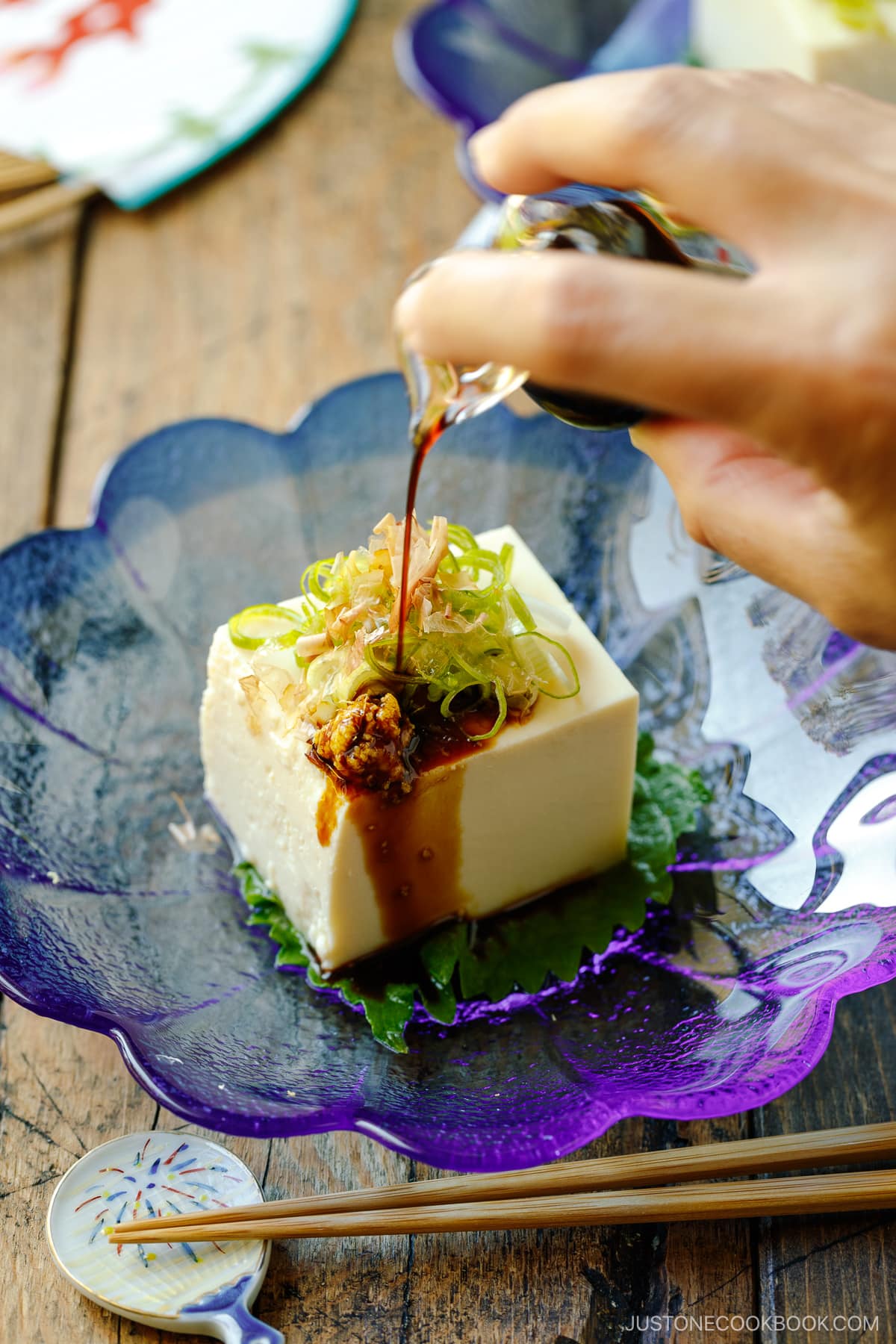
Hiyayakko (冷奴) is Japanese cold tofu that is served as an appetizer or side dish. The silky smooth and creamy texture of the tofu helps to cool the body and makes a delightful respite on a sweltering day. It’s a popular dish to serve in the summertime along with Edamame. I remember my grandpa always started his summer meal with a glass of cold beer next to these two dishes.
Table of Contents
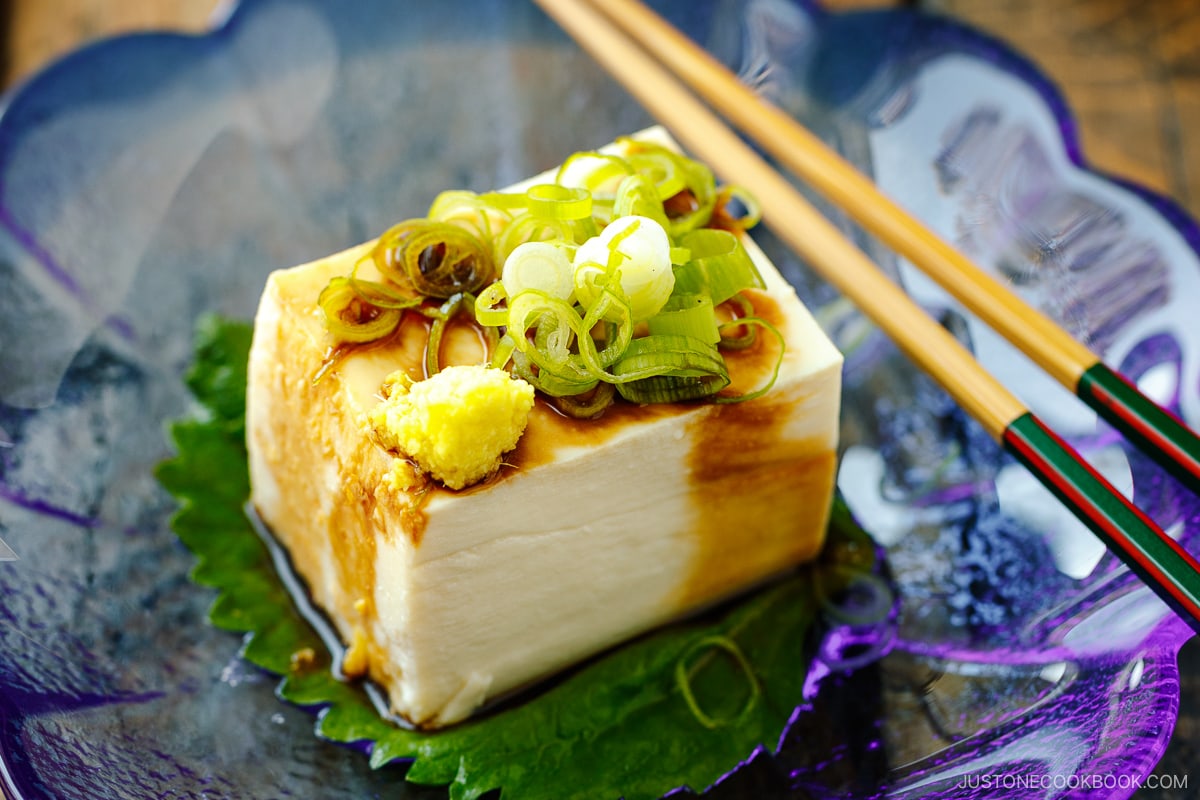
What is Hiyayakko?
Hiyayakko (冷奴 or ひややっこ) translates to cold tofu or chilled tofu in English. Hiya (冷) means chilled, and yakko (奴) refers to the traditional square block shape of the tofu.
Japanese cold tofu is usually enjoyed as an appetizer or side dish, especially in the summer months.
To prepare hiyayakko, you’ll need a block of soft or silken tofu. Medium or firm tofu is never used for this dish. The chilled tofu is typically served with various toppings, and a simple version includes green onions and katsuobushi (bonito flakes) along with grated ginger. You would drizzle a little bit of soy sauce right before eating.
Japanese Cold Tofu (Hiyayakko) is naturally a vegan/vegetarian dish. You just need to skip any non-vegan ingredients such as dried bonito flakes (katsuobushi), and top the tofu with tomatoes, cucumbers, corn, or other vegetables.
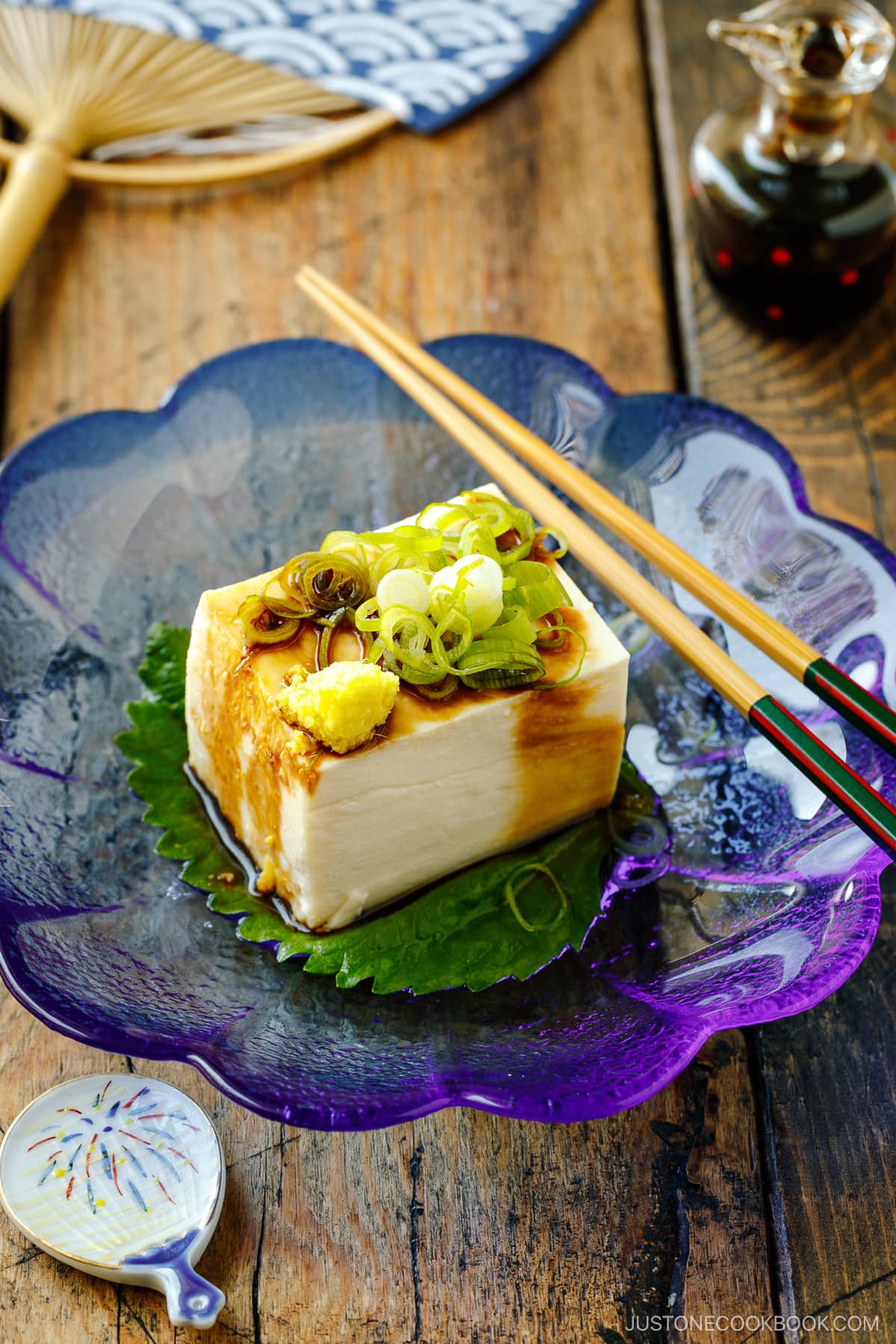
How to Make Hiyayakko
The Ingredients You’ll Need
- Soft or silken tofu – Do not use regular or firm tofu. Soft or silken tofu has a creamier and velvety texture and it’s ideal for hiyayakko.
- Green onions – They add a nice refreshing crunch texture.
- Ginger – I love this ceramic grater for grating ginger. Ginger adds a nice zesty flavor.
- Katsuobushi (dried bonito flakes) – It is full of umami, but feel free to skip for vegan.
- Soy sauce – Use tamari or gluten-free soy sauce for GF. Optionally, you can use ponzu or mentsuyu (noodle soup base).
The Preparation
Soft or silken tofu contains a lot more liquid than regular tofu, so you need to drain the tofu for at least 10 minutes. This allows the flavor of soybeans to come through. However, do not press the tofu because it will crumble easily. Also, we still need some remaining liquid to keep the tofu moist.
After draining, cut the tofu into smaller blocks. For a typical tofu package, I’d cut it into four pieces. In Japan, tofu packages tend to be slightly smaller, so you may want to cut them into two or four (but it will be a smaller portion).
Then top the tofu with toppings of your choice. Keep it chilled until you’re ready to serve.
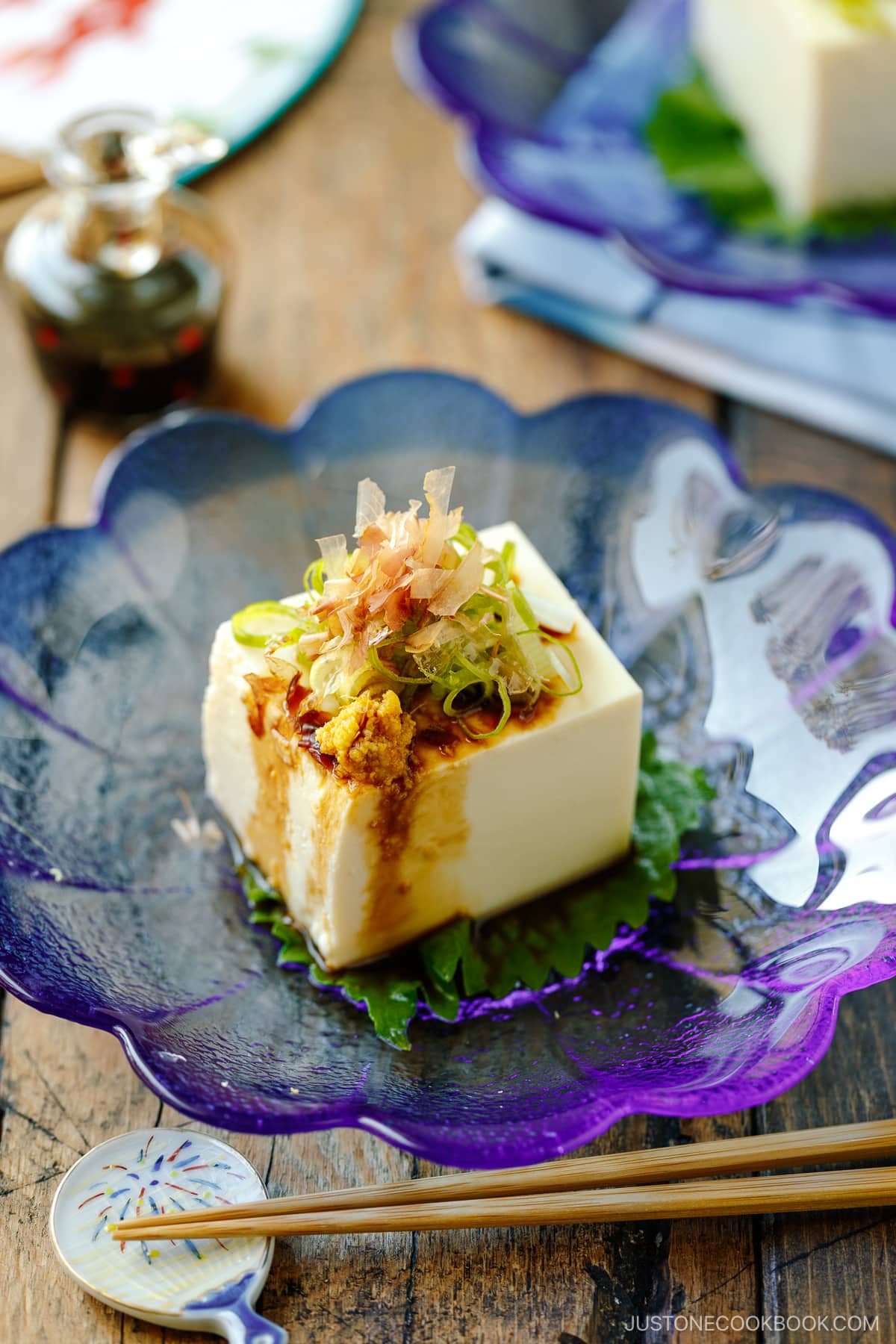
How to Serve Hiyayakko
Always serve the cold tofu with a choice of your sauce, typically soy sauce. At the table, right before you eat, you would drizzle a little bit of soy sauce. You don’t want a pool of soy sauce sitting in a dish.
Cooking Tips
- Drain the tofu for 10 minutes. We’ll gently drain the tofu by wrapping it with paper towels, so the taste of soybeans becomes richer and more flavorful. Do not press the tofu.
- Chill the tofu until serving. Hiyayakko tastes the best when the tofu is super chilled! I usually serve it when everyone sits at the table and right before eating.
- Before you bring it to the table, have a quick check on the serving plates. If you see any water being released from the tofu, gently tilt the serving plate and discard the water.
Various Topping Ideas
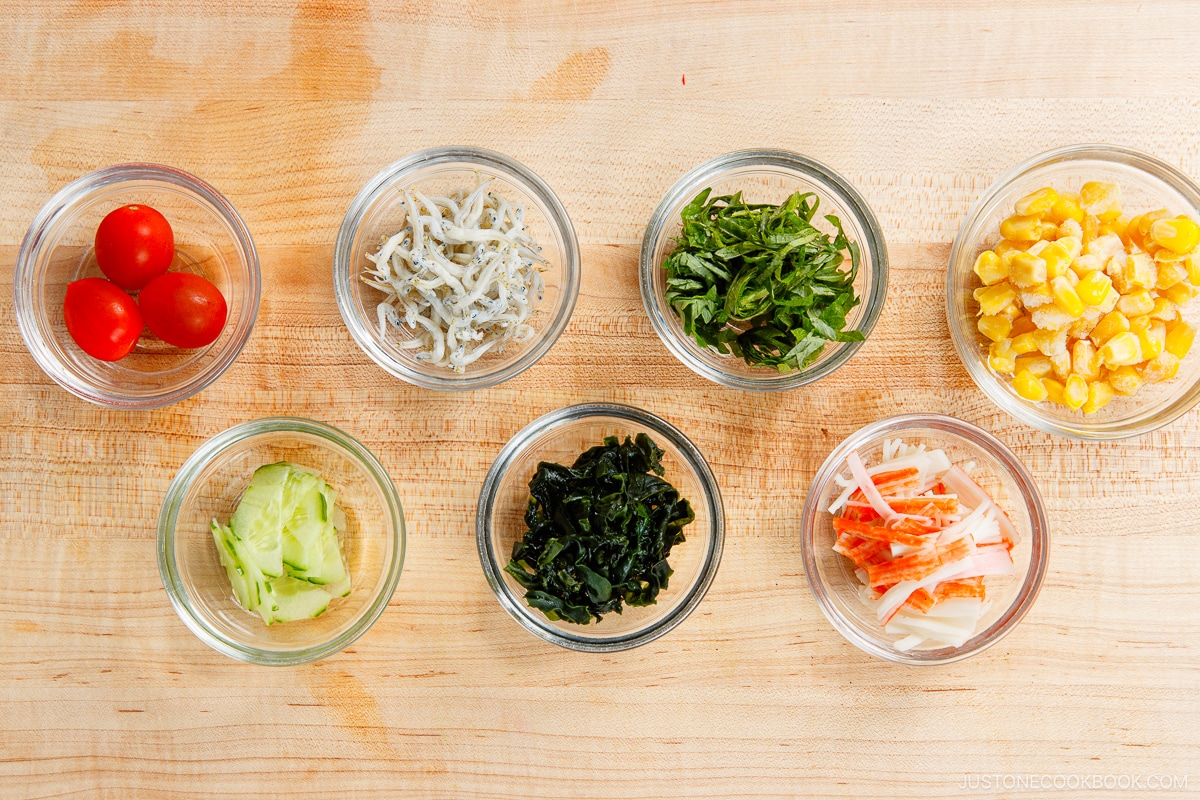
We usually serve the chilled tofu with green onions, grated ginger, and katsuobushi (dried bonito flakes). However, hiyayakko is a very versatile dish. As tofu is mild in taste, it complements an amazing range of flavors and textures. You can be creative with the toppings and sauce. Here are some ideas:
- Cherry tomatoes
- Shirasu (baby anchovies)
- Julienned shiso leaves
- Sweet corn
- Sliced cucumbers
- Wakame seaweed
- Crab meat
- Myoga (Japanese ginger)
- Wasabi
- Salmon Flakes
- Furikake (Rice Seasonings)
- All Purpose Miso Meat Sauce (Niku Miso)
Besides Japanese ingredients, I also like topping hiyayakko with my Homemade Quick Kimchi.
Other Sauce Options
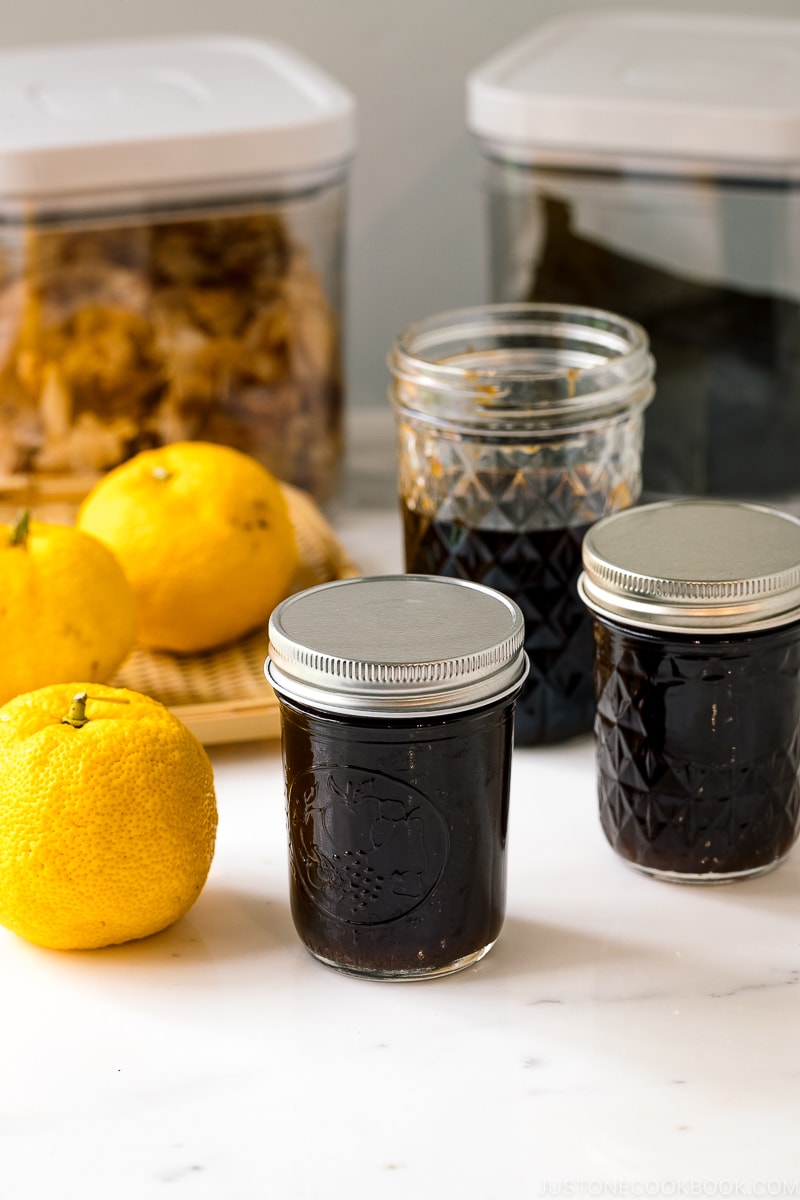
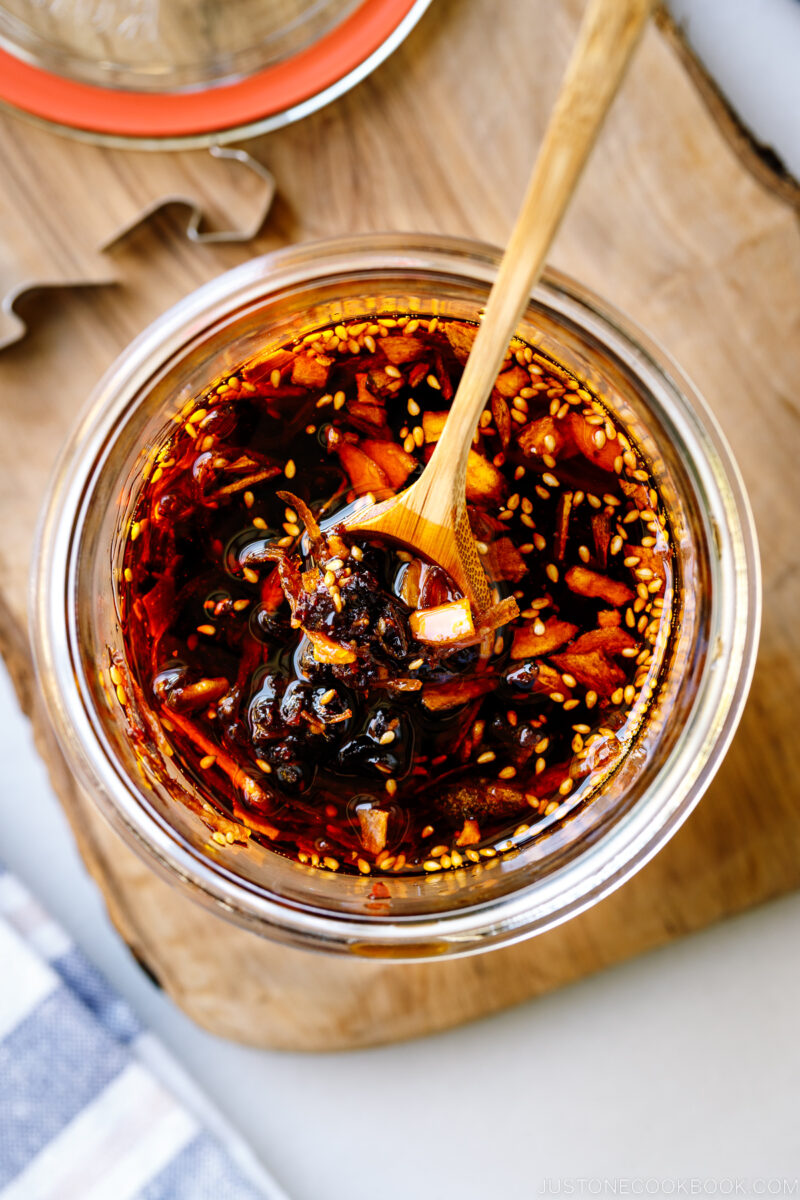
Besides soy sauce, the following sauces are typically used.
A touch of sweet, salty, tangy, or spicy addition adds a nice contrast to plain tofu.
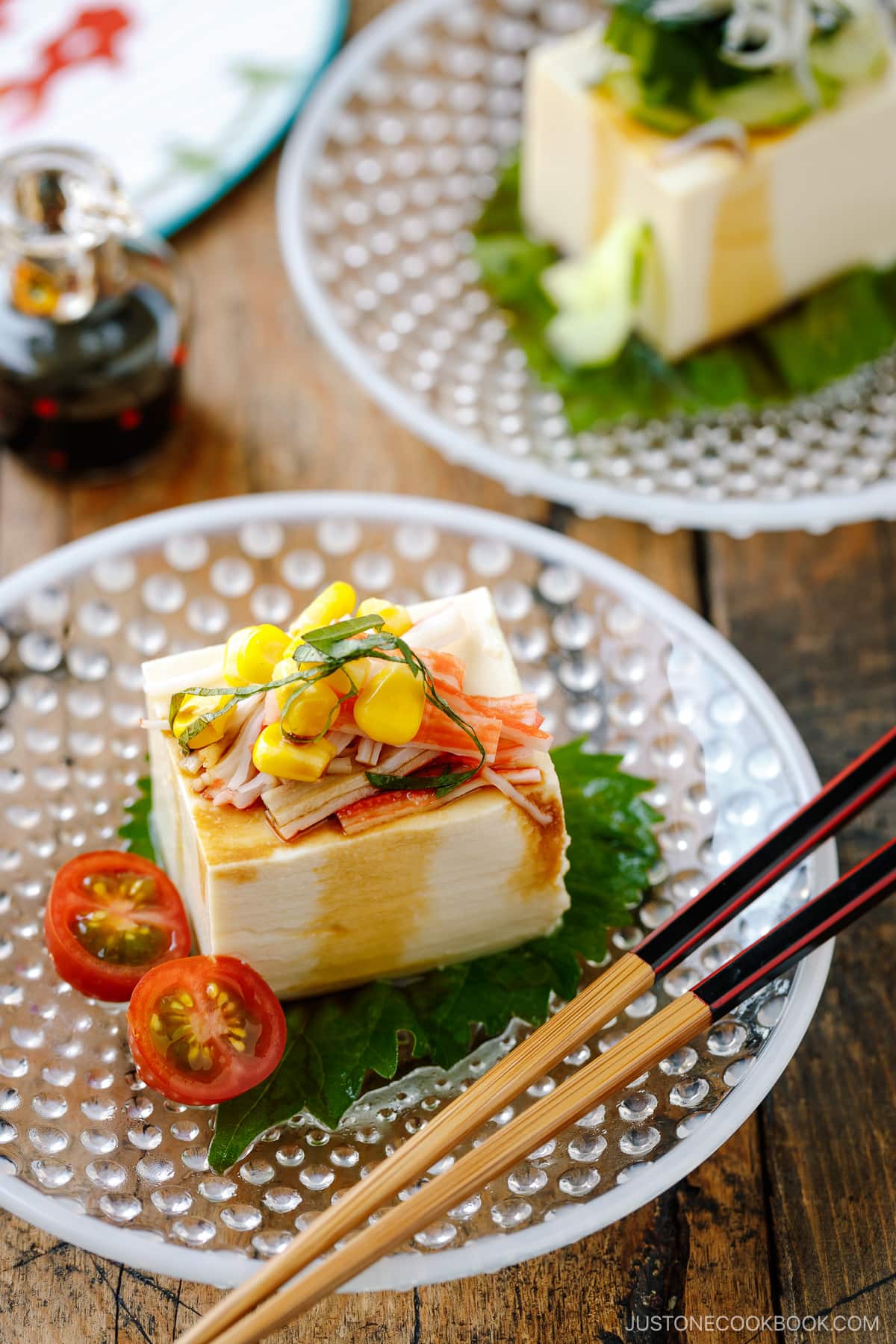
Try Hot Tofu in Winter
When it’s too cold to eat hiyayakko, try Hot Tofu (Yudofu)!
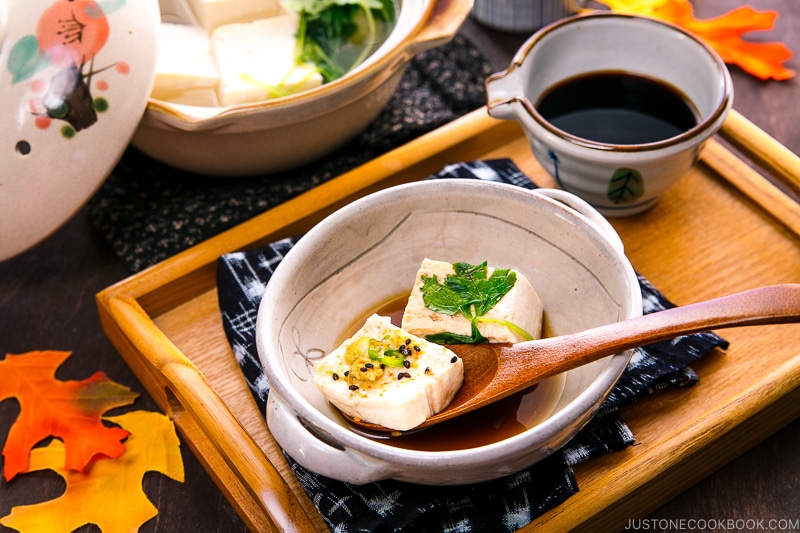
What to Serve with Japanese Cold Tofu
- Main: Teriyaki Chicken, Miso Salmon, Eggplant Agebitashi, and Zaru Soba
- Soup: Tonjiru (Pork and Vegetable Miso Soup) and Sanpeijiru (Salmon Miso Soup).
- Rice: Gyudon, Hijiki Rice, and Japanese Corn Rice.
- Sides: Japanese Spinach Salad with Sesame Dressing and Kinpira Gobo.
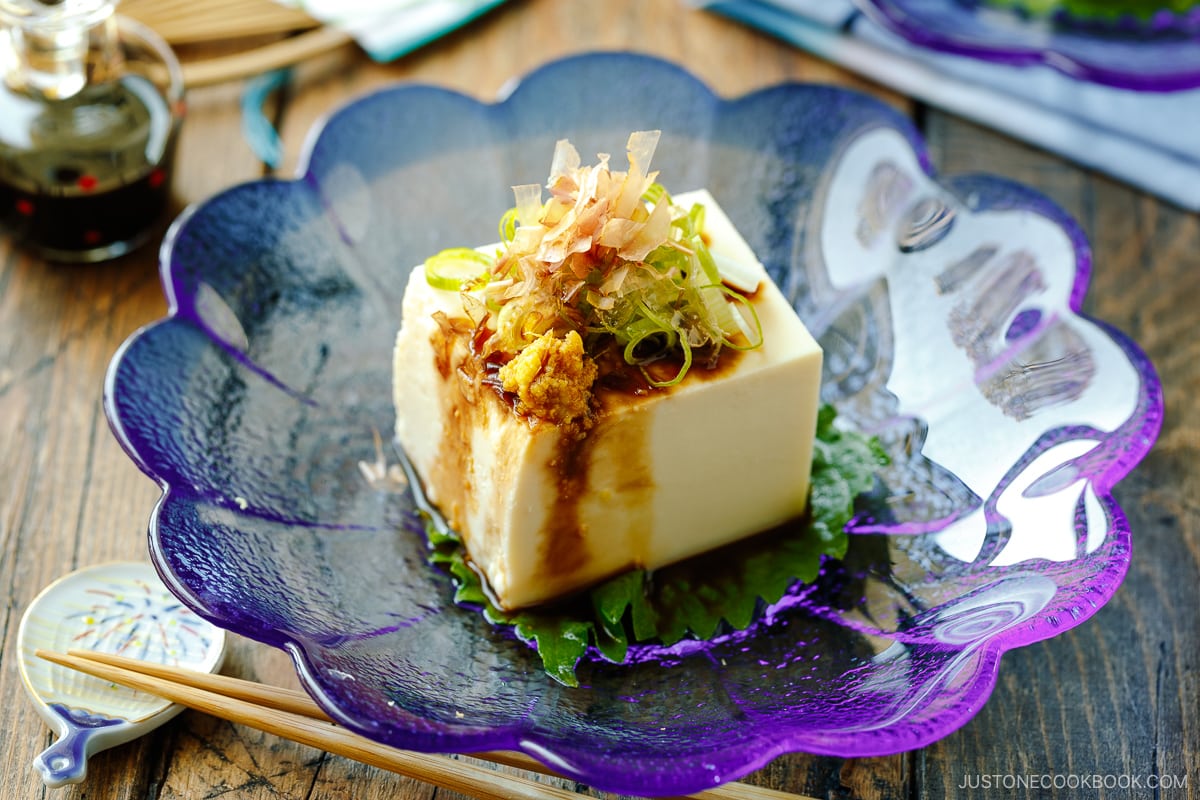
Wish to learn more about Japanese cooking? Sign up for our free newsletter to receive cooking tips & recipe updates! And stay in touch with me on Facebook, Pinterest, YouTube, and Instagram.
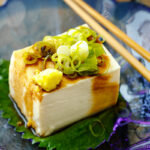
Hiyayakko (Japanese Cold Tofu)
Ingredients
- 14 oz soft/silken tofu (kinugoshi dofu) (1 pack, chilled)
- 1 green onion/scallion
- ½ tsp ginger (grated; from a 1-inch, 2.5-cm knob)
- 4 shiso leaves (perilla/ooba) (optional; for decoration)
- 2 Tbsp katsuobushi (dried bonito flakes) (skip for vegan/vegetarian)
- soy sauce (you can use ponzu or mentsuyu (noodle soup base) instead, but they are not vegan/vegetarian)
Instructions
- Gather all the ingredients.
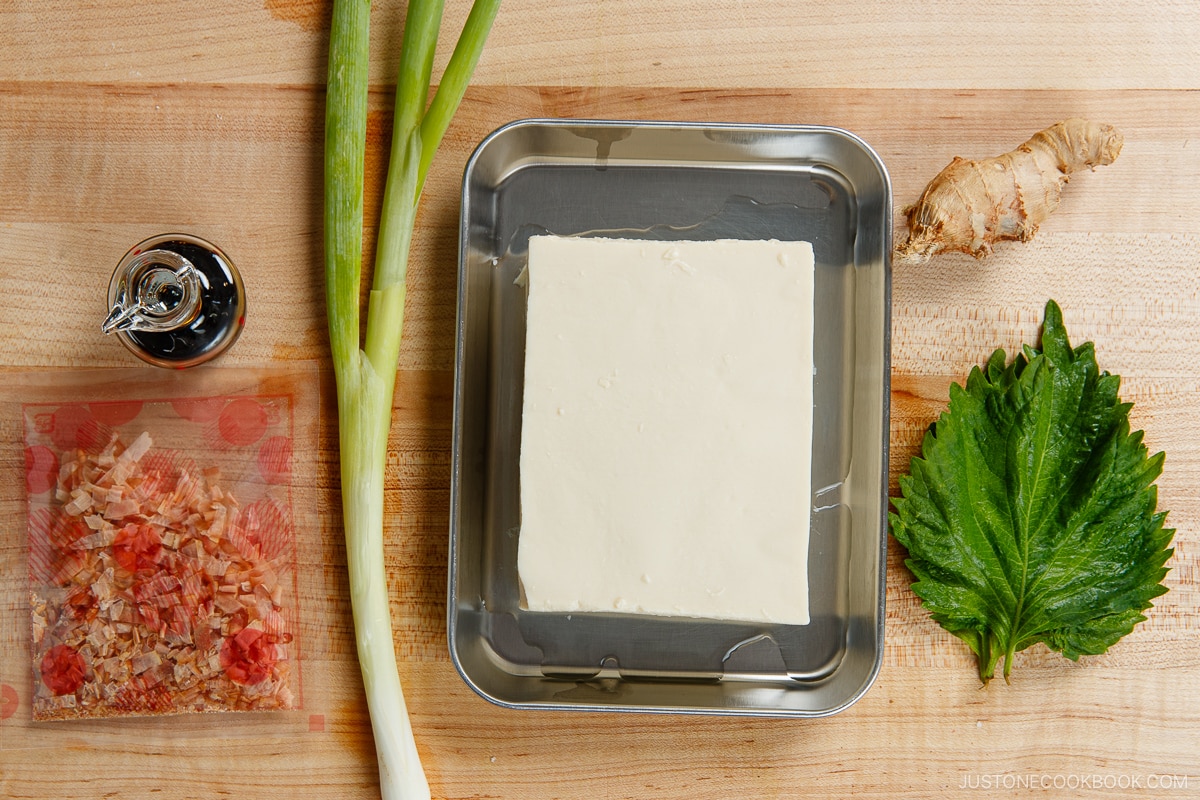
- Drain 14 oz soft/silken tofu (kinugoshi dofu) for 10 minutes by wrapping a paper towel around it. You do not need to press the tofu in this recipe as you want to retain some moisture in the tofu. Be gentle when handling since silken (soft) tofu is very fragile.
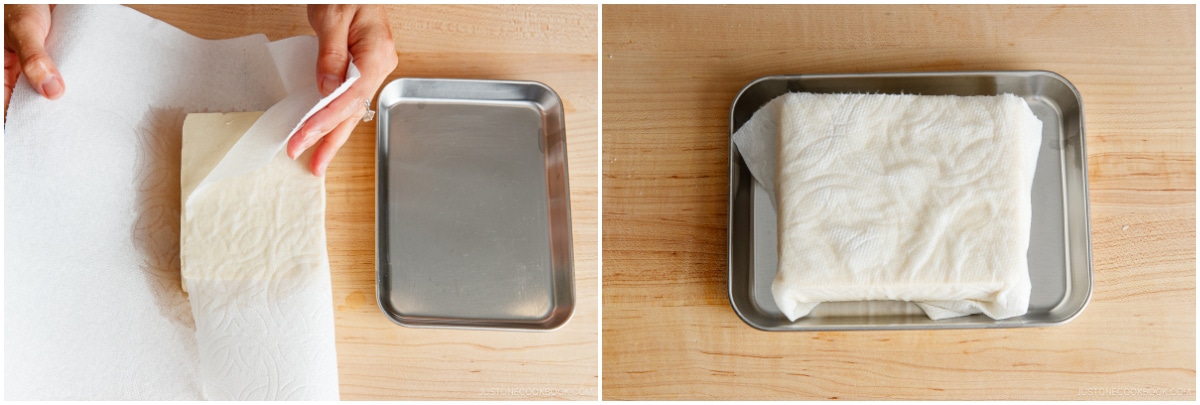
- Meanwhile, prepare the toppings. First, thinly slice 1 green onion/scallion.
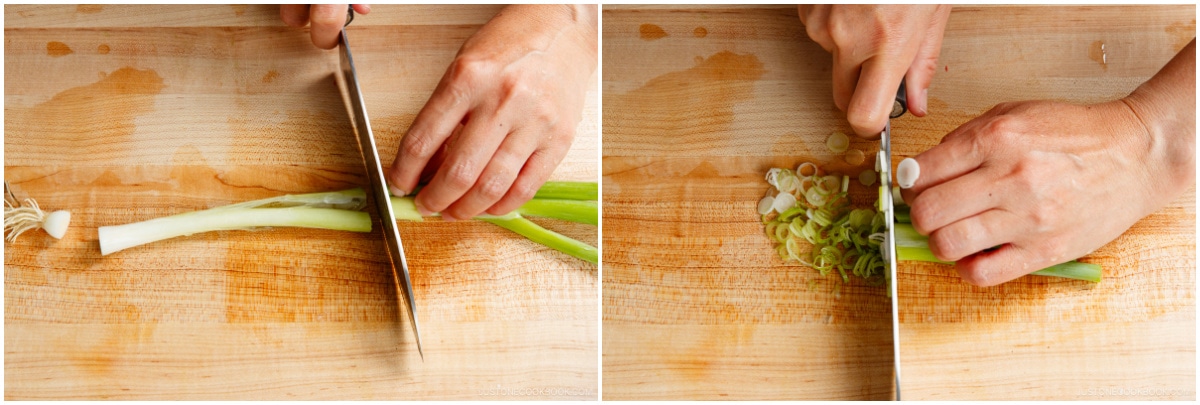
- Peel the ginger skin, grate the ginger (I use a ceramic grater), and measure ½ tsp ginger (with the juice).
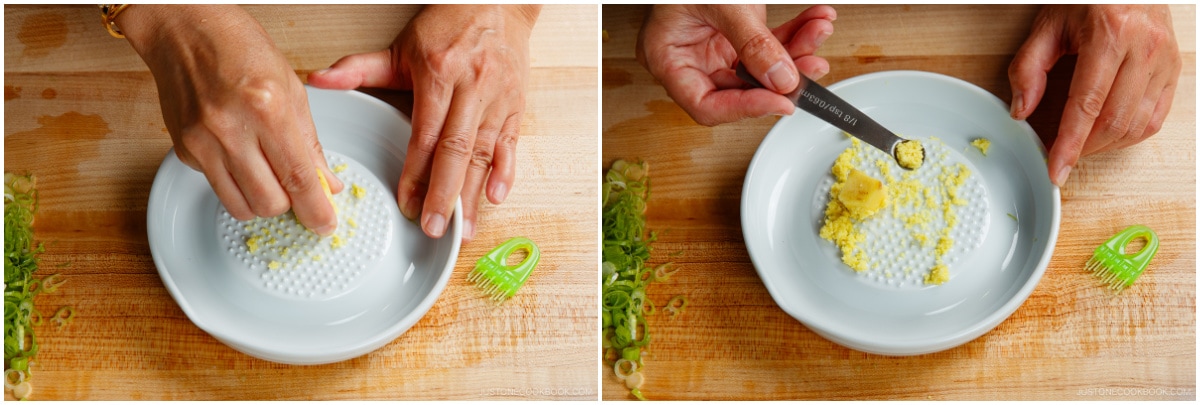
- Once the excess liquid is drained, cut the tofu into 4 pieces.
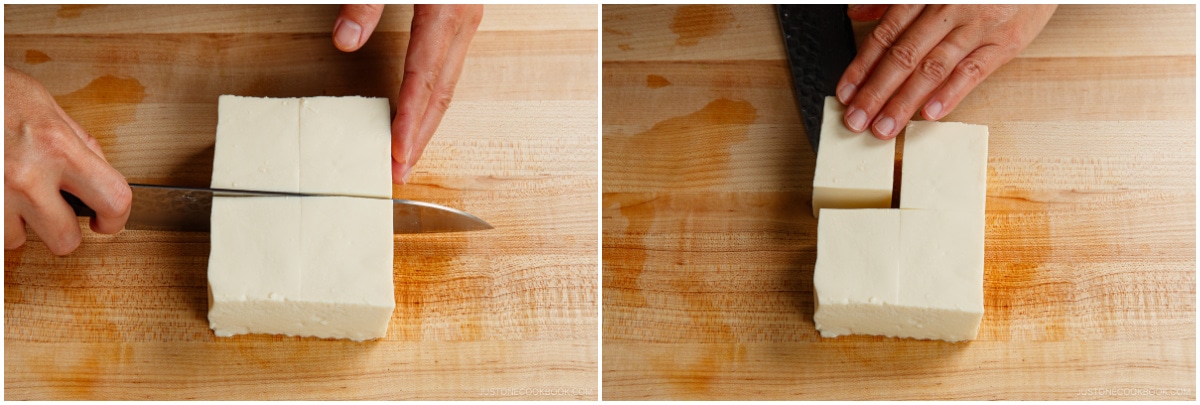
- Put a shiso leaf on each serving dish and gently place one piece of tofu on top of each leaf. Top the tofu with green onions and grated ginger. Chill the tofu until right before serving.
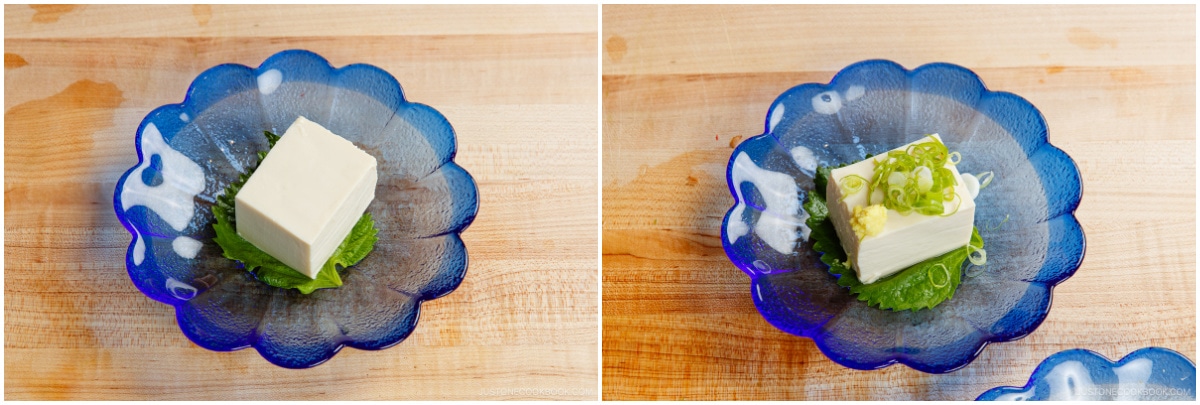
To Serve
- Before you bring it to the table, quickly check the dish. If you see that the tofu has released more liquid, gently tilt the plate and discard the water. Divide 2 Tbsp katsuobushi (dried bonito flakes) among the cut tofu pieces. At the table, drizzle with soy sauce or another sauce of your choice right before you enjoy.
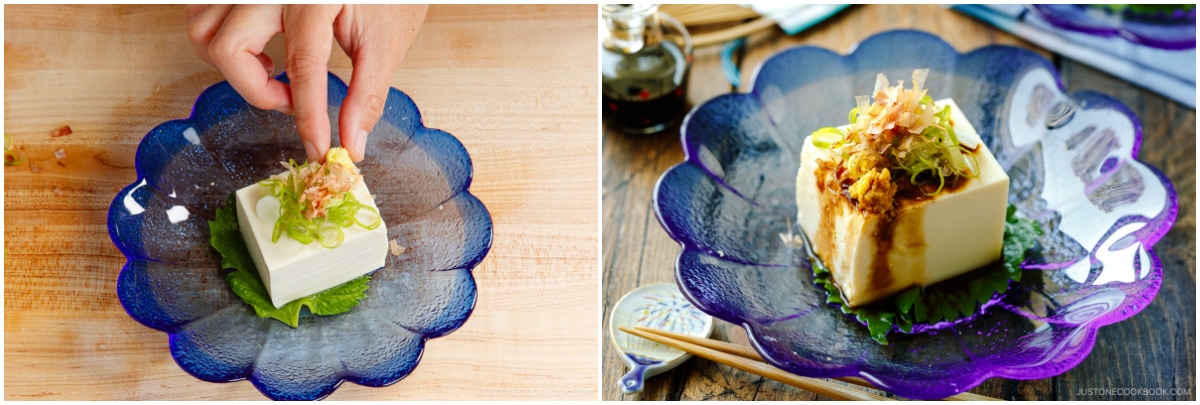
To Make Variations
- You can also make your own variations with your favorite toppings. Popular toppings include cherry tomatoes, shirasu (baby anchovies), julienned shiso leaves, sweet corn, sliced cucumbers, wakame seaweed, and crab meat. It‘s also delicious topped with All-Purpose Miso Sauce or Crunchy Garlic Chili Oil (Taberu Rayu). Read more ideas in the blog post above.
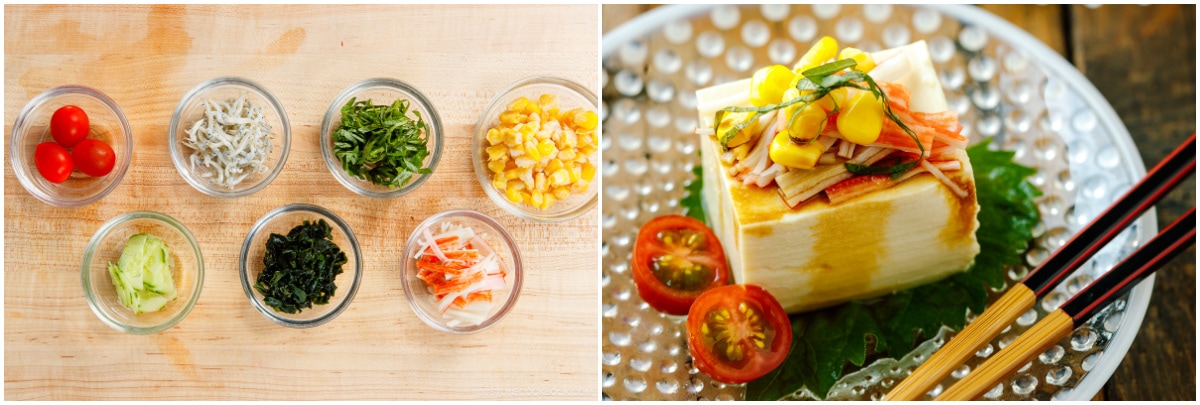
To Store
- You can keep the leftover tofu in an airtight container and store in the refrigerator for a day.
Nutrition
Update: This post was originally published on August 17, 2019. It’s been updated with more information and new step-by-step and final images on August 7, 2023.
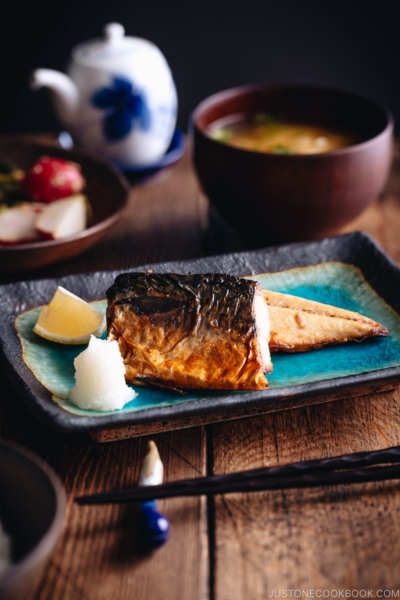
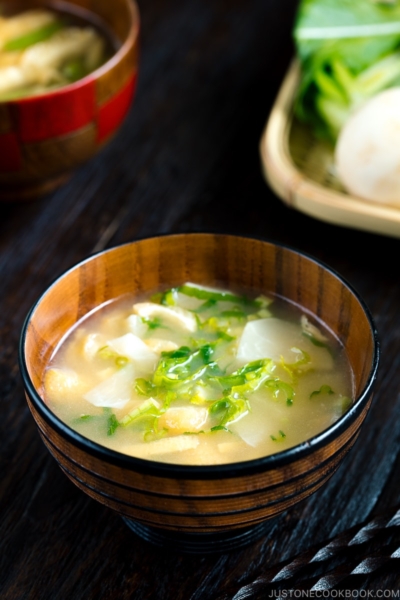
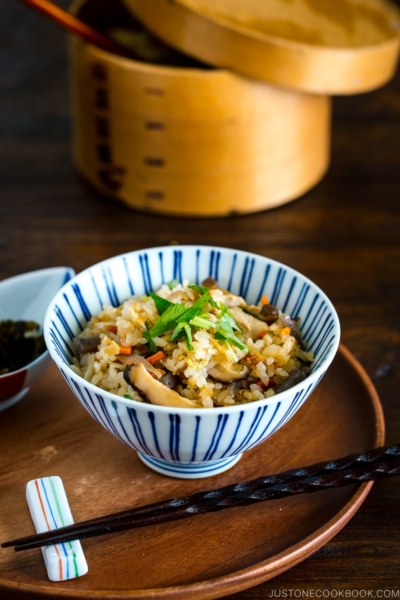
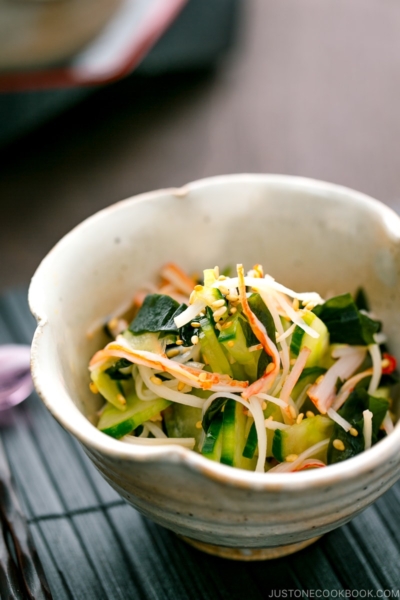
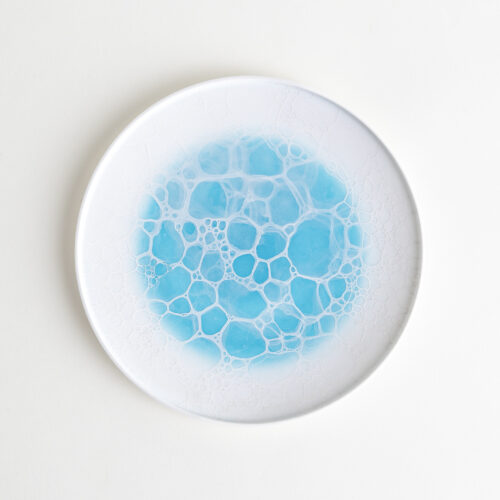
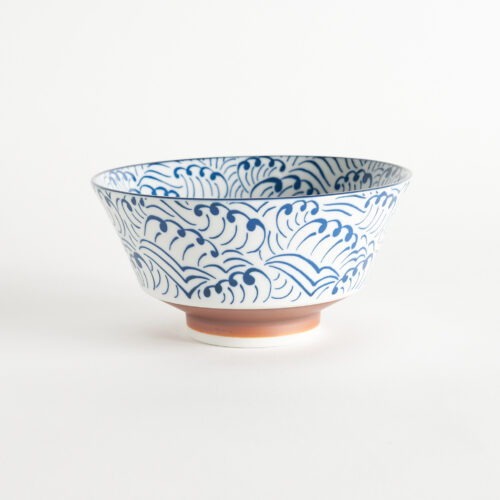
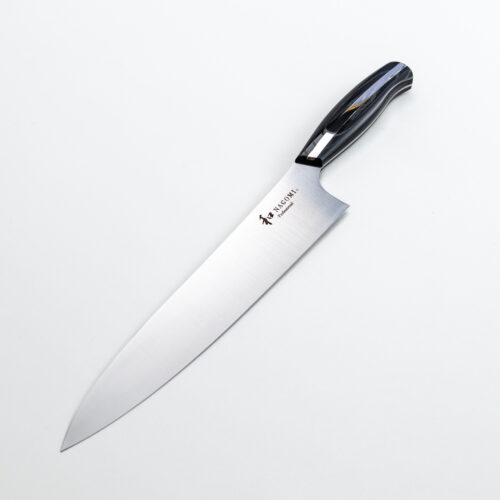
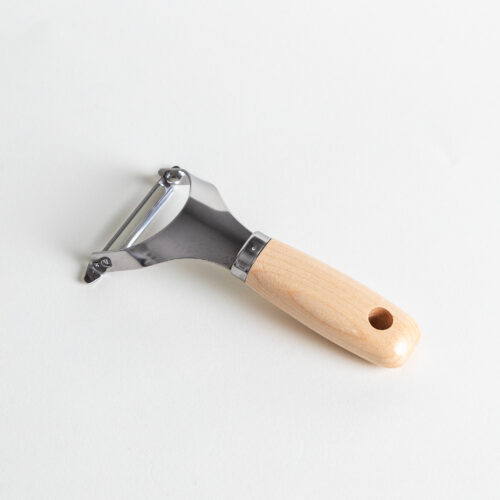
I’ve been meaning to make this for some time now. Finally got around to it yesterday and am I ever glad. It’s very refreshing (and light) on a hot day in Easter NC!
Hi Jessica! We’re so happy to hear you enjoyed this refreshing summer dish! Thank you for giving Nami’s recipe a try and for your kind words!
If you’re in the mood for more light and seasonal dishes, feel free to explore our “Occasion” category under the recipe search. We’ve gathered some lovely ideas perfect for warm days.
https://www.justonecookbook.com/recipes/
Wishing you lots of delicious summer cooking ahead! 🤗
Do you need to cook the tofu before eating?
Hello Ritsuko! Thank you for trying out Nami’s recipe.
Japanese Tofu is already prepared and does not require any cooking before consumption. However, depending on the manufacturer and country of origin, some packages may advise cooking before eating. Please remember to check the package instructions.
We hope this information is helpful to you.😊
I love to eat tofu like this. I top mine with thawed frozen leaf or chopped spinach and tiny bit of sesame oil. You just thaw the spinach, squeeze the moisture out. put it on the tofu, drizzle the sesame oil, then top with bonito flakes and soyu.
Hi Donald! Thank you so much for taking the time to read Nami’s post and sharing your experience and tip with us. It sounds so delicious!
I made this for the first time tonight with some homemade fried rice. I topped ours with Sriracha sauce and some Sea Chi, a combination of Maine seaweed with kimchi – in addition to the soy, bonito, ginger, and scallions. Looking forward to making more. Great year round!
Hi Robert! Thank you for trying Nami’s recipe and sharing your experience with us.
We are glad to hear you enjoyed the dish! 😊
My brother “hates tofu” but ALWAYS WANT ME TO MAKE THIS DISH!
I make this refreshing and delicious tofu all summer long. What a blessing. It comes together in no time and is just what the dr ordered on a hot day.
Hi John! We are so happy to hear your brother enjoyed Hiyayakko as well!
Thank you for trying Nami’s recipe!
I used to love this, I made it often in the summer. Somehow I got out of the habit of making it, I always omitted the bonito flakes and used a few slice of picked ginger and Shiso leaves. I never thought of cucumber.
Hi Linda! Thank you very much for reading Nami’s post and sharing your cooking experience with us!
We are glad to hear you found new ways to enjoy Hiyayakko from our site.
We hope you enjoy the cucumber version too. 😊
I grew up eating this. We oftrn “cheat” and use furikake on it, with a little soy sauce. Yummy!
Hi Tina! We are glad to hear you enjoy Hiyayakko!
Thank you for reading Nami’s post and sharing your experience with us!😊
What a good idea. I’ll have to try that.